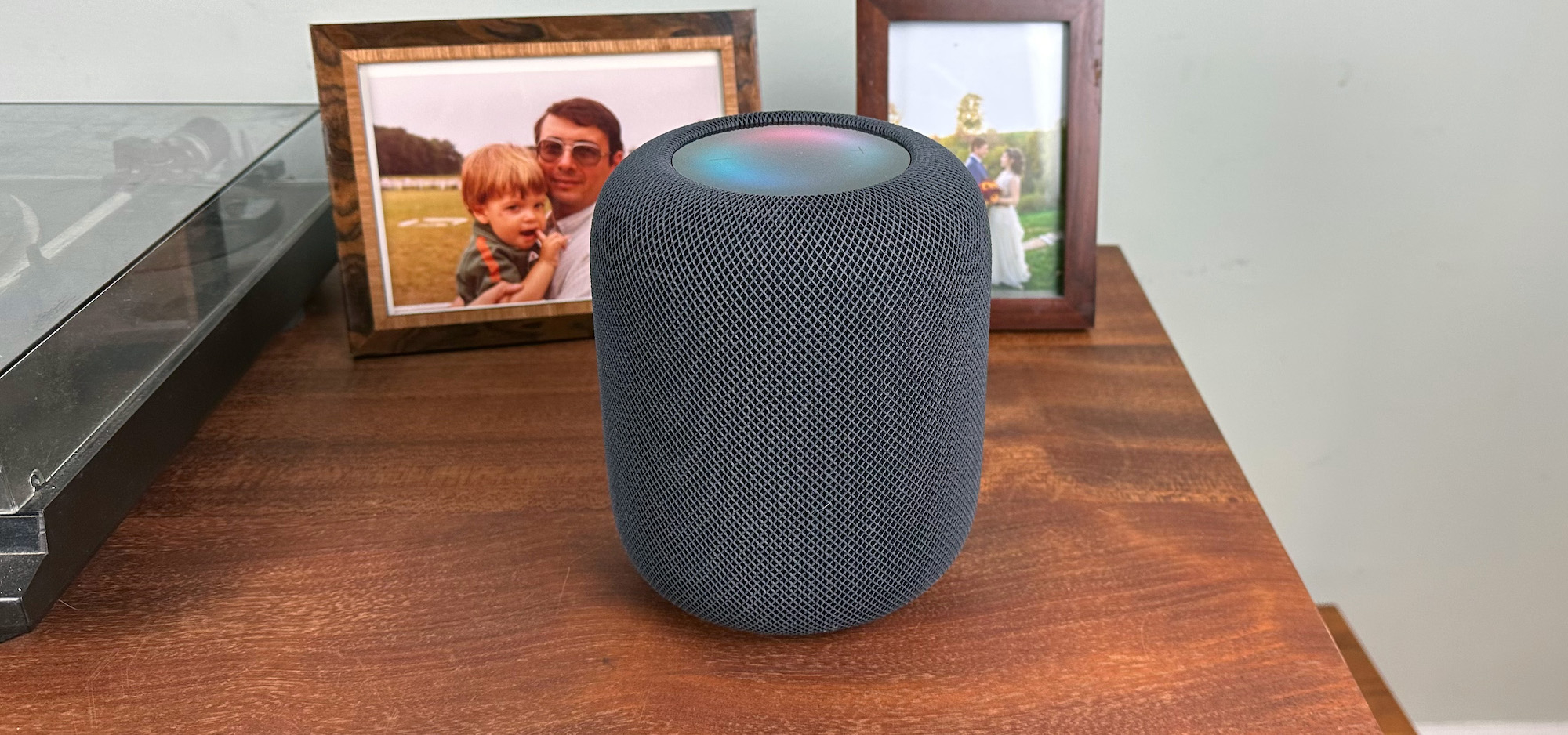Tom's Guide Verdict
The Apple HomePod 2 delivers amazing sound quality, and works incredibly well within Apple’s ecosystem — such as with the Apple TV 4K. However, it’s much more expensive than our favorite smart speaker, the Sonos One, which works with Alexa and Google Assistant.
Pros
- +
Great sound quality
- +
Integrates well with other Apple products
- +
Support for Matter
- +
Temperature, humidity sensors
Cons
- -
One of the most expensive smart speakers
Why you can trust Tom's Guide
Apple is taking another crack at smart speakers with the HomePod 2 (a.k.a the HomePod 2nd generation). This updated version of the original, which was discontinued in 2021, looks mostly the same on the outside, but has some revamped features to help it better compete with the best smart speakers.
The 2nd Generation HomePod supports Matter, a new smart home standard that’s just now rolling out. This should make it easier to connect far more devices to HomeKit, which should help remove one of the chief complaints about Apple’s smart home platform. It also has a temperature and humidity sensor built in. And, the HomePod 2 also works really well with Apple’s other products — namely, the Apple TV 4K — so you can make it the center of your home entertainment system.
But should you drop $300? You’ll want to read the rest of this HomePod 2 review before making up your mind.
Apple HomePod (2nd gen) review: Price and availability
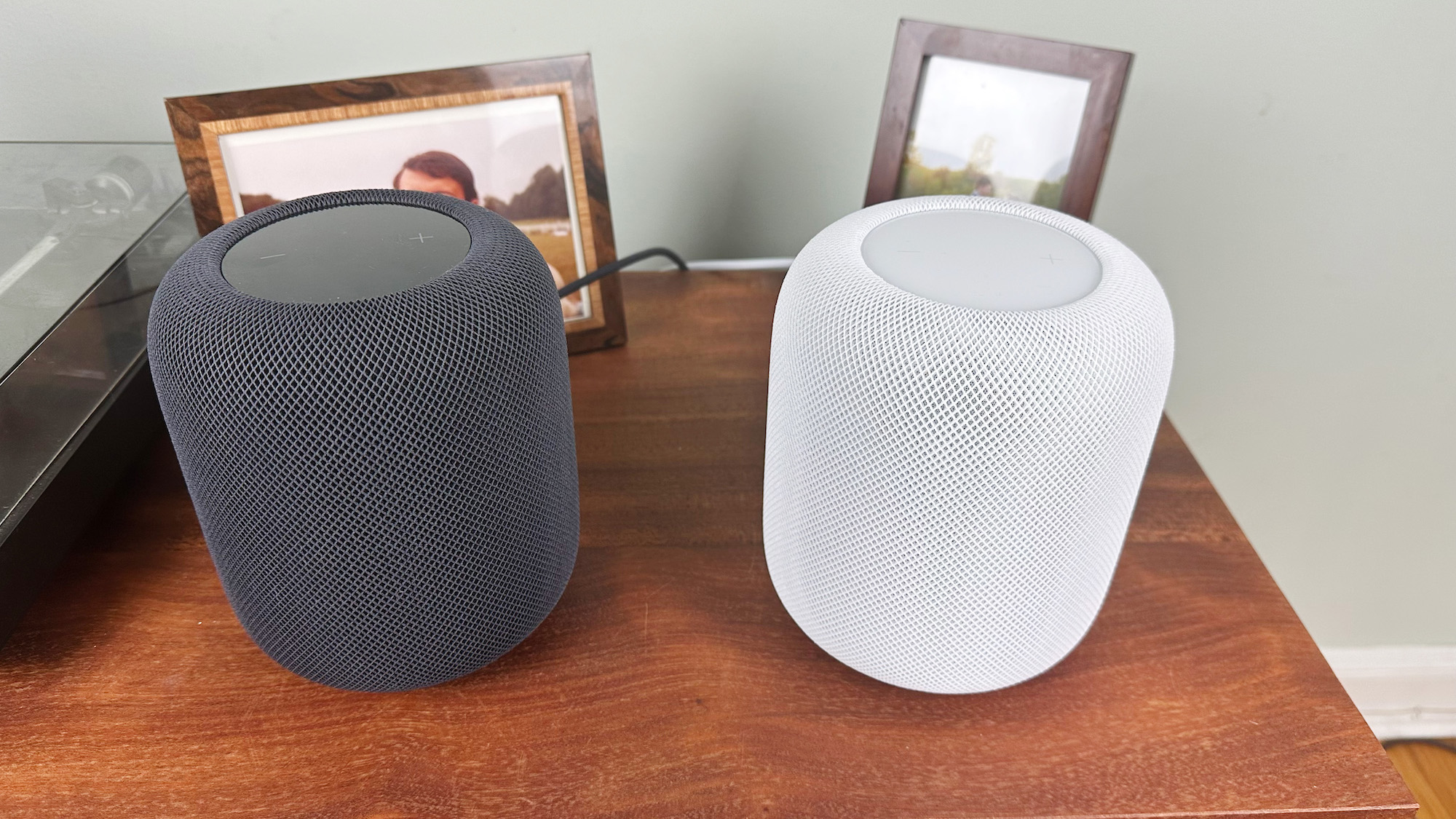
The HomePod 2 went on sale February 3, 2023. It costs $299, and is available in either white or black. I hope this changes — the HomePod mini comes in a variety of colors, some of which really add a nice accent to your room.
That price maintains the HomePod 2 as the most expensive smart speaker among its peers. The Amazon Echo Studio costs $199, while the Sonos One is $219 and the Sonos Era 100 is $249. Apple also offers the HomePod mini for $99, though the sound from it is far less expansive.
Apple HomePod (2nd gen) review: Design
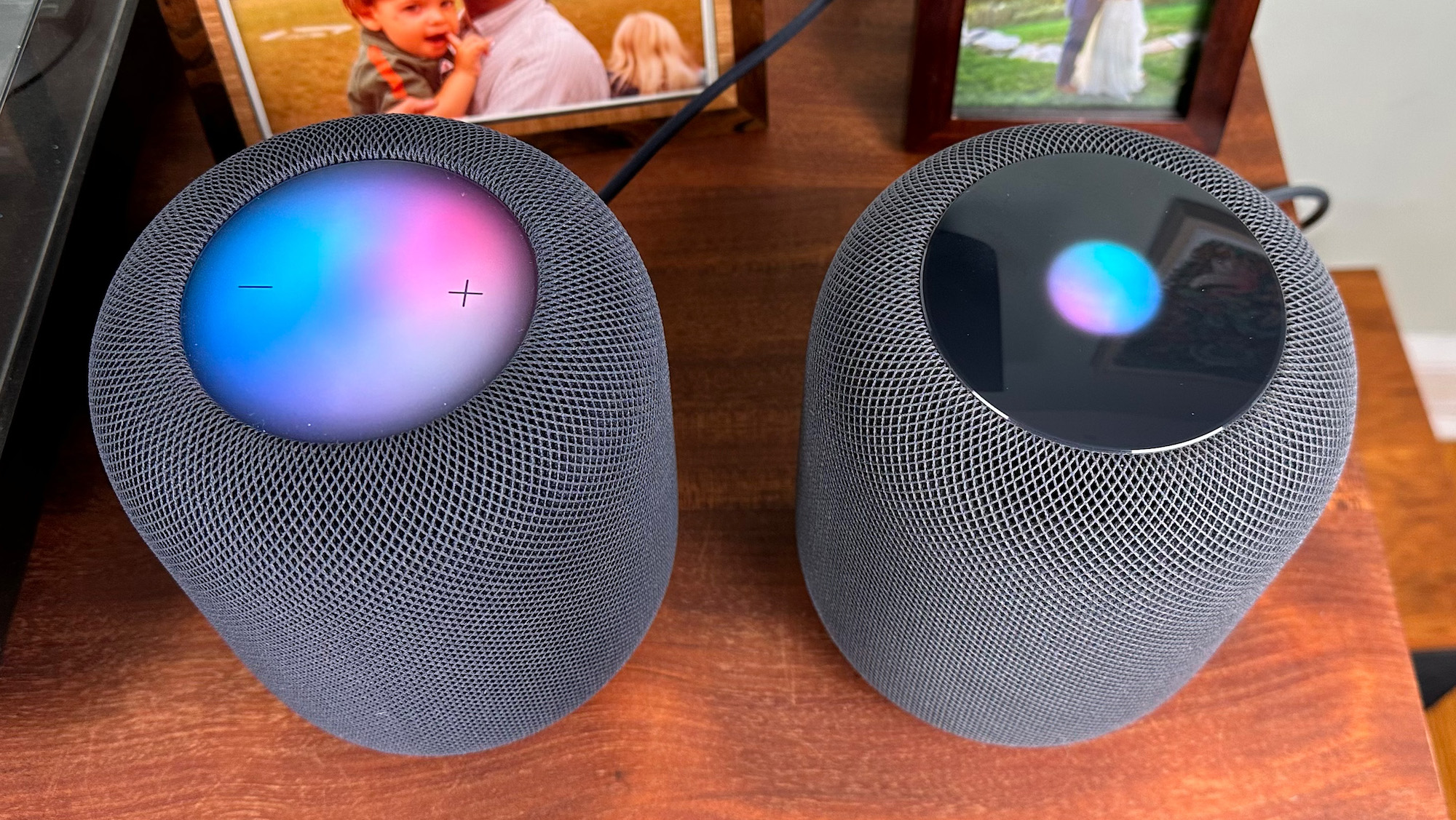
Apple HomePod 2 (left), original Apple HomePod (right)
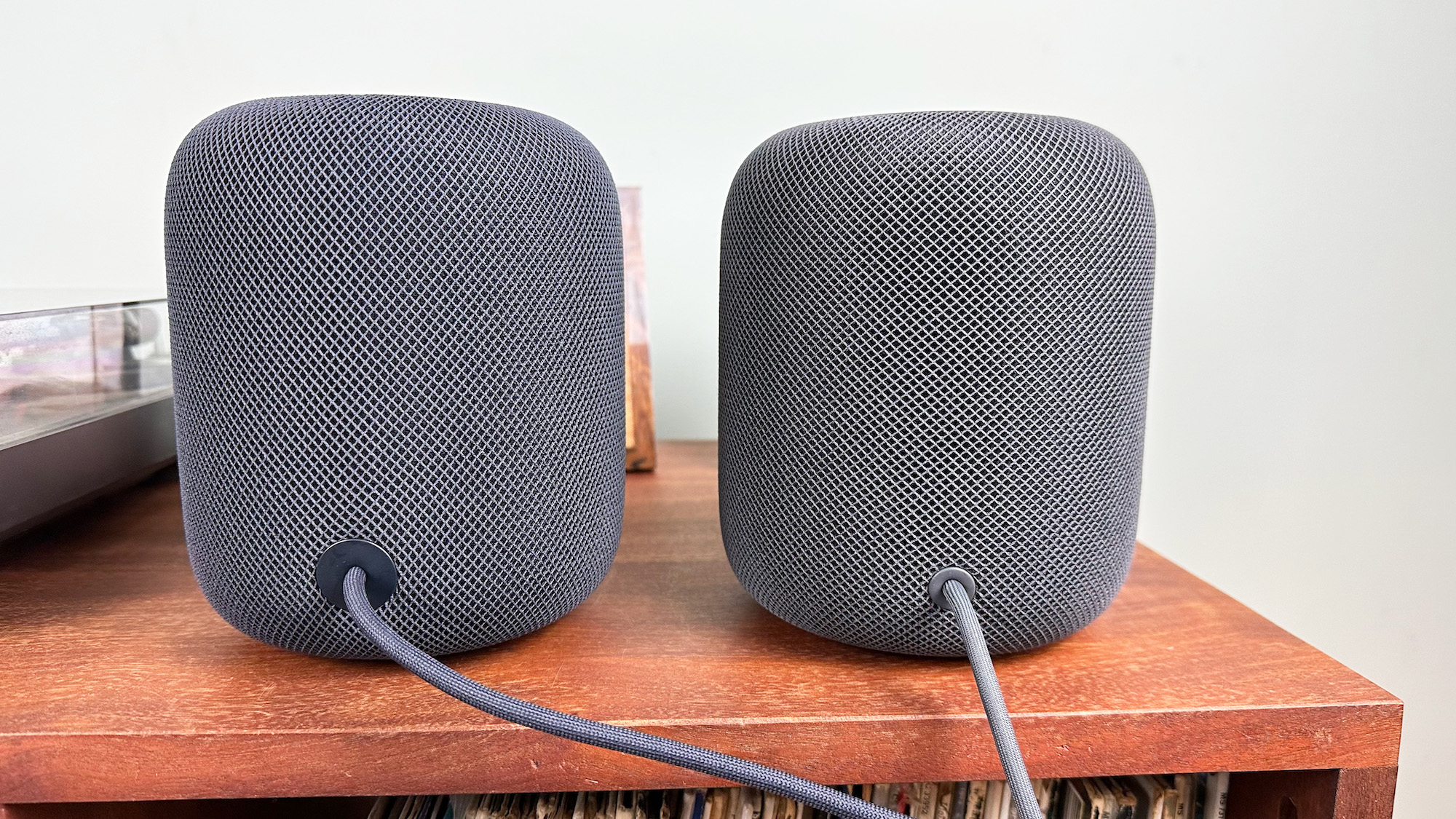
Apple HomePod 2 (left), original Apple HomePod (right)
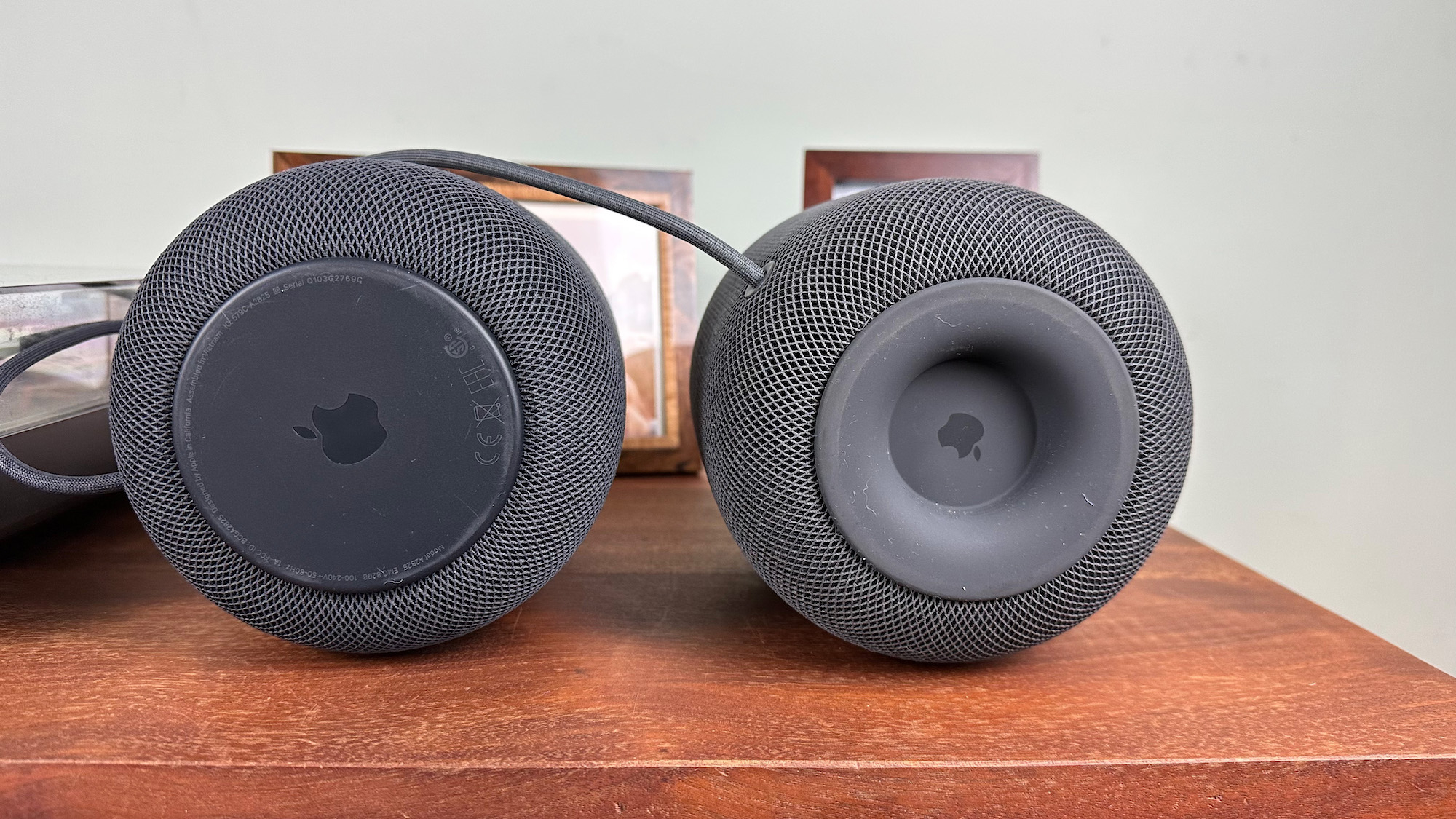
Apple HomePod 2 (left), original Apple HomePod (right)

Apple HomePod 2 (left), original Apple HomePod (right)
Size: 6.6 inches (height), 5.6 inches (diameter)
Weight: 5.2 pounds
Speakers: One 4-inch woofer, five tweeters
Sensors: Temperature, humidity
Wireless: Bluetooth 5.0, Thread, 802.11n Wi-Fi
At first glance, you’d be hard-pressed to tell the difference between the HomePod 2 and the original; both are fabric-covered cylinders with a circular translucent touchscreen at the top.
The biggest difference is the touchscreen itself. On the HomePod 2, the display is slightly recessed (the original’s panel was flush with the top). Also, while the diameter of the cover is the same size, the part that illuminates is much larger on the HomePod 2, extending nearly to the edges. The effect of the swirling colors when you activate Siri is much more mesmerizing.
But the top of the HomePod 2 is there for more than just looks: you can tap on it to play and pause your tunes, advance or go back, change the volume, and summon Siri. The plus and minus signs to increase the volume are also more pronounced on the HomePod 2, but it can still be tricky to view them in brighter settings.
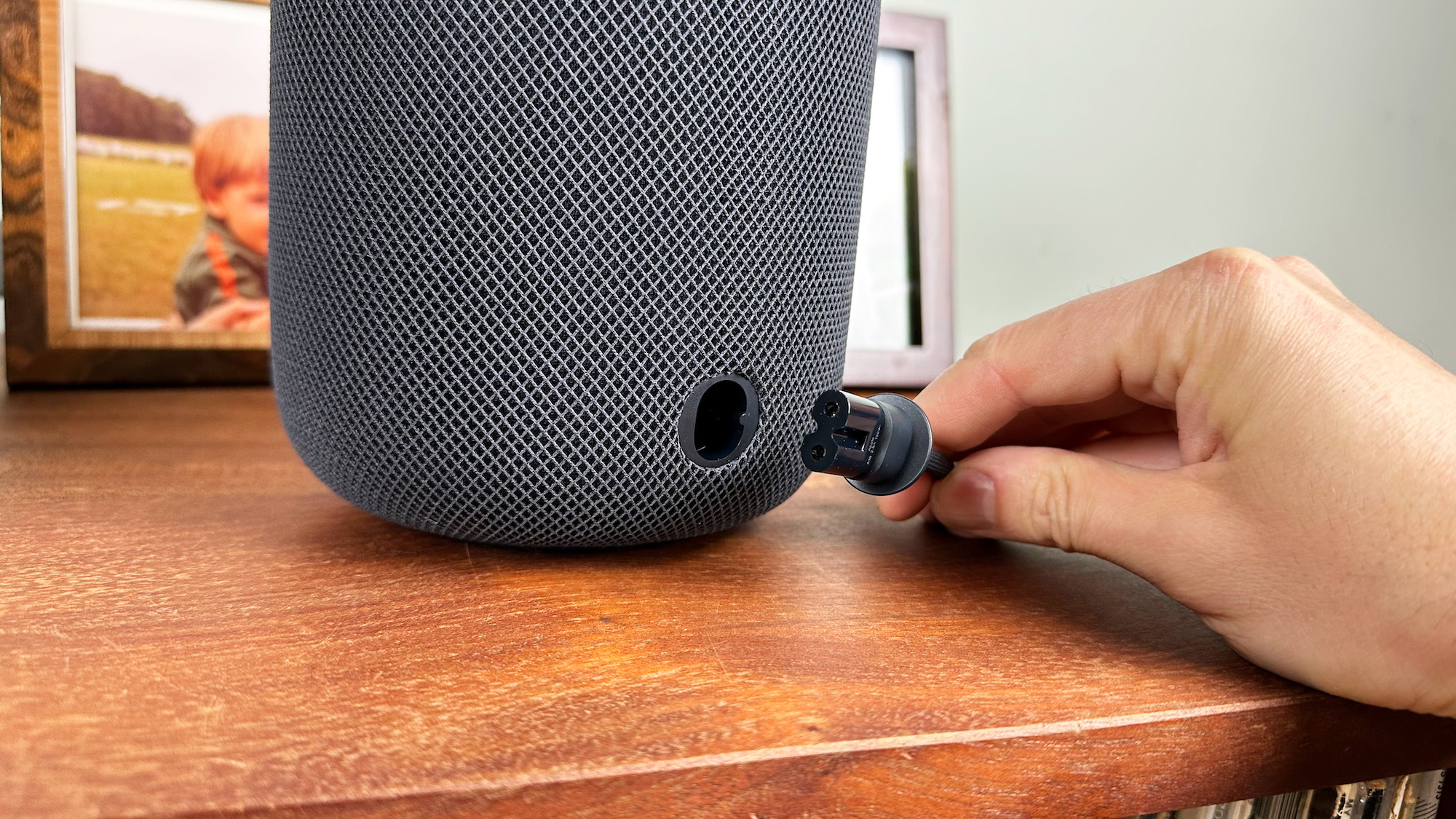
One of the biggest improvements in the design of the HomePod 2 is the fact that the power cord is now detachable. On the original HomePod and the HomePod mini, the power cord was hardwired into the device itself. If this cord became damaged in any way, you had to replace the entire device.
The bottom of the HomePod 2 is also made of plastic, rather than silicone, so there’s no risk of the HomePod leaving a big white circle on your furniture, as was the case with the original. (I know, because it happened to me.)
Update (2/1): My initial assessment was wrong; the HomePod 2 will stain wood furniture just like the original. Place it on a coaster or some other object.
There is one otherI thing I wish Apple added to the HomePod 2: a switch, physical or otherwise, to turn off the HomePod 2’s microphones. While Apple has traditionally placed a greater emphasis on user privacy, it would still be nice to have the reassurance that Siri wasn’t listening.
Inside, a single, large 4-inch speaker faces upward, while an array of five smaller tweeters is arrayed around the bottom of the HomePod 2. In addition, four microphones arrayed around the middle of the HomePod 2 are there to listen for your voice.
Apple HomePod (2nd generation) review: Audio quality
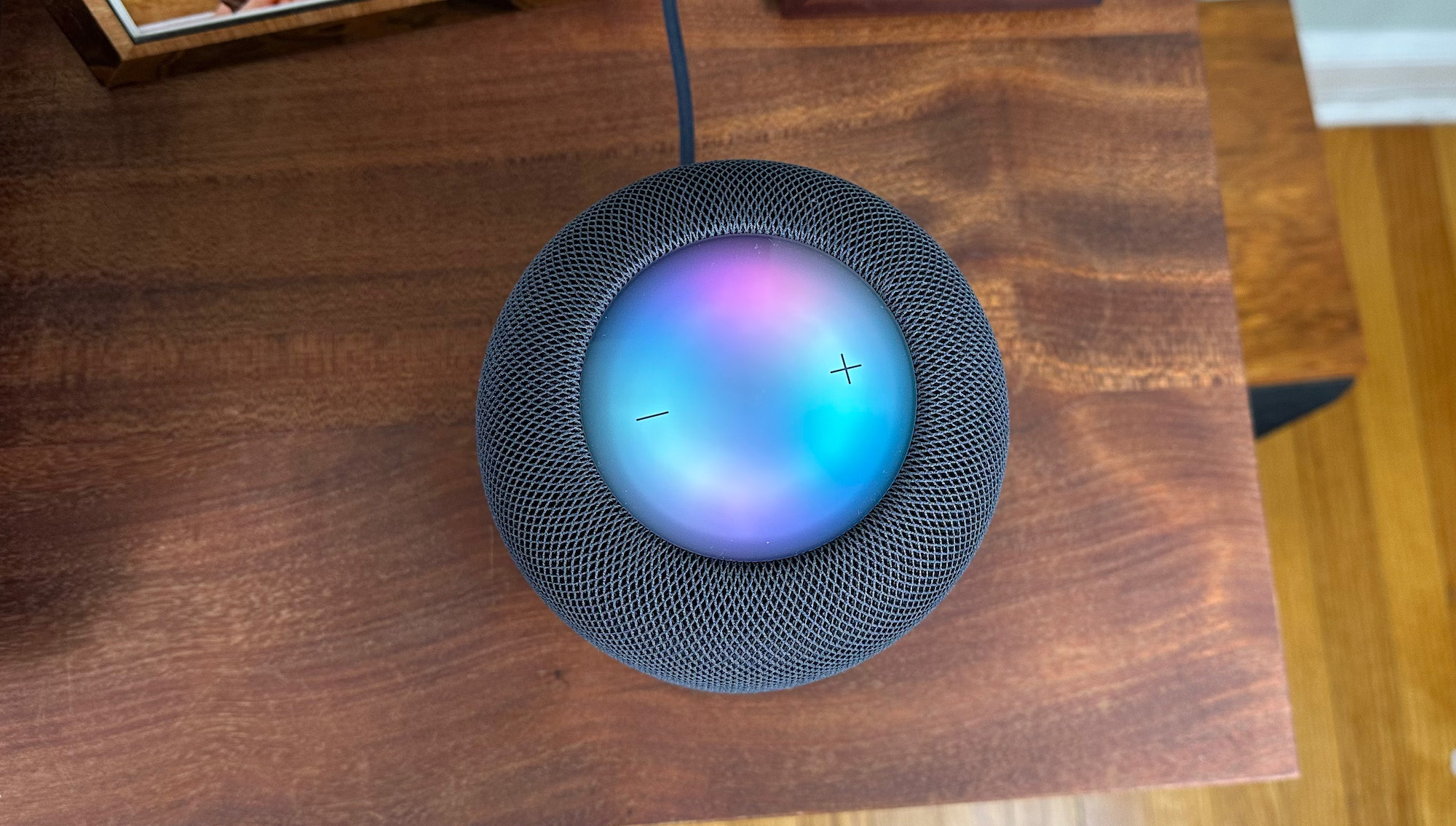
It should come as no surprise that the HomePod 2 sounds just as good — if not better — than the original. However, in a side-by-side comparison between the HomePod 2 and the Sonos One, there was still a fairly clear difference between the two.
Like the original HomePod, the HomePod (2nd gen) uses its microphones to listen for echoes, so it can sonically "map" the room it’s in, and then adjusts the audio output to sound best for that room. It’s all done automatically, without you needing to do anything. By comparison, the Sonos One requires you to move your phone throughout your room as the speaker plays a tone; it only takes a minute, but it’s more hands-on.
I found that while the HomePod 2 delivered stronger bass, the Sonos One did a better job with mids and highs, making voices sound more present.
Over the course of several days, I listened to a variety of tracks on a HomePod 2 and a Sonos One in my living room, using both Spotify and Apple Music, and streaming the music via AirPlay. I found in general that while the HomePod 2 delivered stronger bass, the Sonos One did a better job with mids and highs, making voices sound more present.
When played on the Sonos One, Sarah Barielies’ voice came through clearer on her breakout hit "Love." Similarly, on "Rosalita" by Bruce Springsteen, The Boss’s voice wasn’t as brassy on the HomePod 2, but the bass was a bit stronger and delivered more of a punch, especially when Clarence Clemons’ sax and the rest of the band came in on the chorus.
I also found that the guitars on Ali Farka Touré & Toumani Diabate’s “Sabu Yerkoy” felt a little more crisp on the Sonos One. I could really hear the plucking and strumming, while vocals were a bit more in the back on the HomePod.
More bass-focused tracks, such as 2Pac's "California Love," sounded better on the HomePod 2, thanks to its stronger bass drive. While I preferred Rihanna’s vocals from "We Found Love," on the Sonos One, the HomePod 2’s better bass made my living room feel more like a dance club.
The bass line on JoJo Siwa’s "High Top Shoes" — having a young daughter means a chance to test out some of her favorite songs — really resonated and boomed on the HomePod, but again, Apple's speaker took a backseat to the Sonos One for her bright vocals.
Similarly, Idina Mendzel’s voice on "Let It Go" — a song which I, like many parents, have heard thousands of times — was bright and powerful on both the HomePod 2 and the Sonos, but just a bit more present on the latter.
As with most other smart speakers, you can also pair two HomePods together to create a stereo pair, which really adds some oomph to whatever it is you’re listening to. However, you have to pair like with like, so you can’t, for example, pair an original HomePod with a HomePod 2.
While Apple has opened up Siri to work with third-party music services such as Pandora, Deezer, TuneIn Radio, and iHeartRadio, it frustratingly does not work with Spotify. It’s an annoying limitation.
Apple HomePod (2nd gen) review: Smart home capabilities
One of the biggest changes between the HomePod and the HomePod 2 is that the latter has a few more smart home capabilities. Most significant is the addition of support for Matter, a new smart home standard that should make it easier to connect a greater number of devices. This is especially significant for Apple, as its smart home platform, called HomeKit, works with far fewer devices than Alexa and Google Home. (Here’s our picks for the best HomeKit devices.)
The HomePod 2 has temperature and humidity sensors built in, so you can ask Siri for the temperature in a particular room.
(Update April 2023): The HomePod 2 can now listen for the sound of a smoke or carbon monoxide detector, and send you an alert on your iPhone, iPad, or Apple Watch, making it a pricey option as one of the best smart smoke detectors. (The Apple HomePod mini also has this ability, if you're looking for a less expensive option.) It’s similar to what Amazon’s smart speakers can do with Alexa Guard, though it can also listen for the sound of glass breaking.
The HomePod 2 also has temperature and humidity sensors built in, so you can ask Siri for the temperature in a particular room. Additionally, you can also create a routine to turn on a fan or a smart air conditioner if the temperature gets too high. Again, this is nothing new; the 4th-generation Amazon Echo and the 5th-gen Echo and Echo Dots also have temperature sensors which can be used to create routines.
Siri has been slowly improving. Back when the original HomePod was announced, one big knock was that you could only create one timer, and couldn’t even name it. No more: Now, you can create as many timers as you want, and name them whatever you want, too.
HomeKit lets you do some pretty comprehensive integrations between smart home devices, too. For example, you can create an automation to turn your window shades to lower if the temperature in a particular room gets too hot. You can also add multiple people to your "home," so that you can create an automation to lock the doors and turn down the air conditioner when everyone leaves the house.
However, there are still places where it needs work. Take the Intercom feature; if you want to send a message from an iPhone, iPad, or the HomePod to another HomePod, it still just records a clip and sends it to the intended recipient. It’s not as instantaneous as the live interaction you get with Alexa Drop-in.
Even with these advances, I think Apple could have gone even further here. For starters, the HomePod 2 only has an 802.11n Wi-Fi connection, which is several generations old. We're now on to Wi-Fi 6E, and Wi-Fi 7 is on the way.
Meanwhile, the 5th-generation Amazon Echo Dot was updated so that it can act as a repeater for an eero mesh router (which is owned by Amazon). Apple hasn’t made its own router for quite some time, but even so, Amazon’s feels a bit more future-proof.
Apple HomePod (2nd gen) review: Interoperability
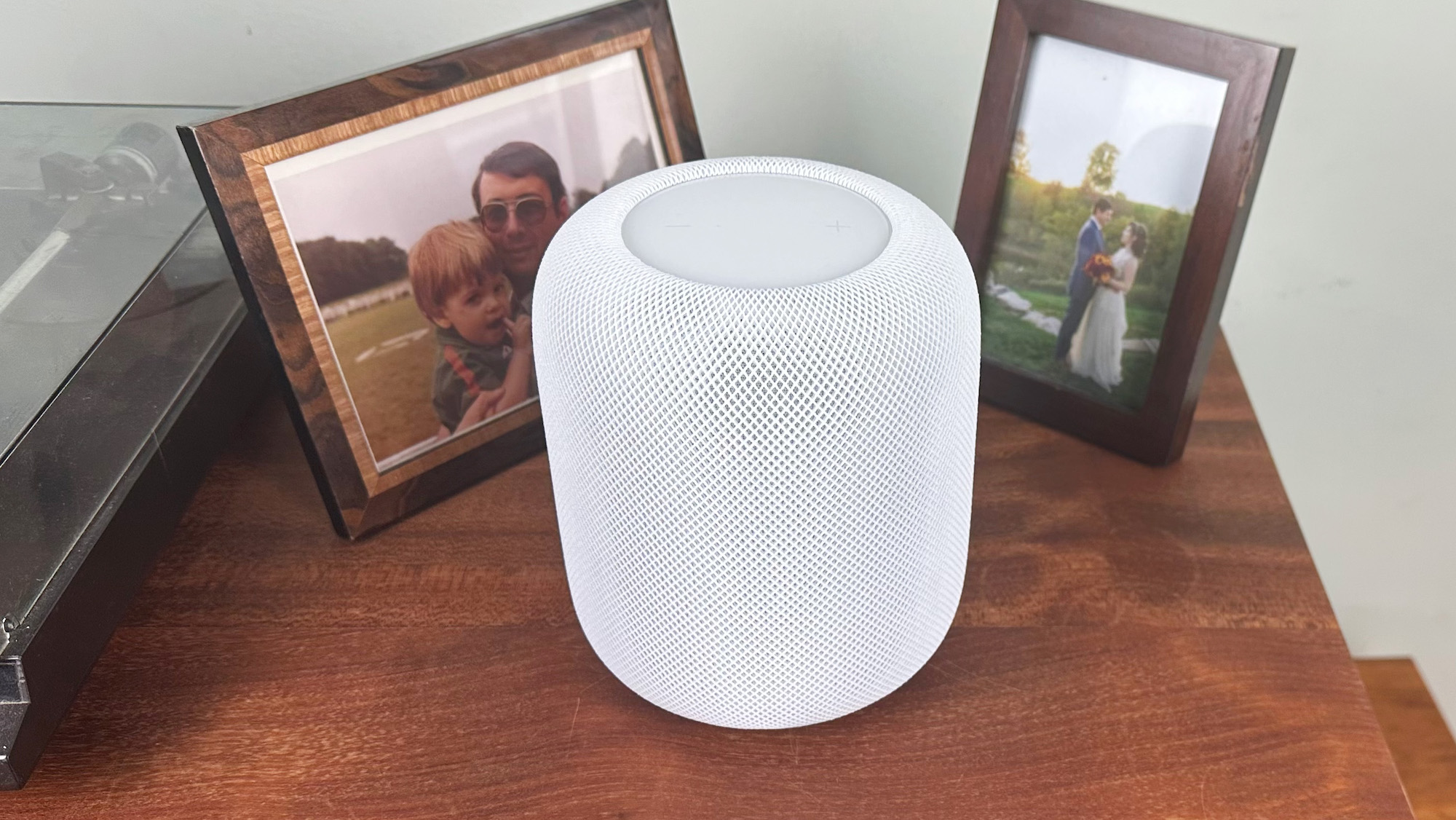
Apple has always been smart about integrating its various products to work together. It starts with setting up the HomePod; after you plug it in, all you need to do is bring your iPhone near the speaker, and a card appears on your phone to set up the HomePod.
If you’re playing music on your phone and want to transfer it to the HomePod? Simply tap the speaker with your iPhone. Chatting with someone on your phone? Just bring it next to your HomePod, and it becomes a speakerphone.
Apple HomePod (2nd gen) review: Entertainment
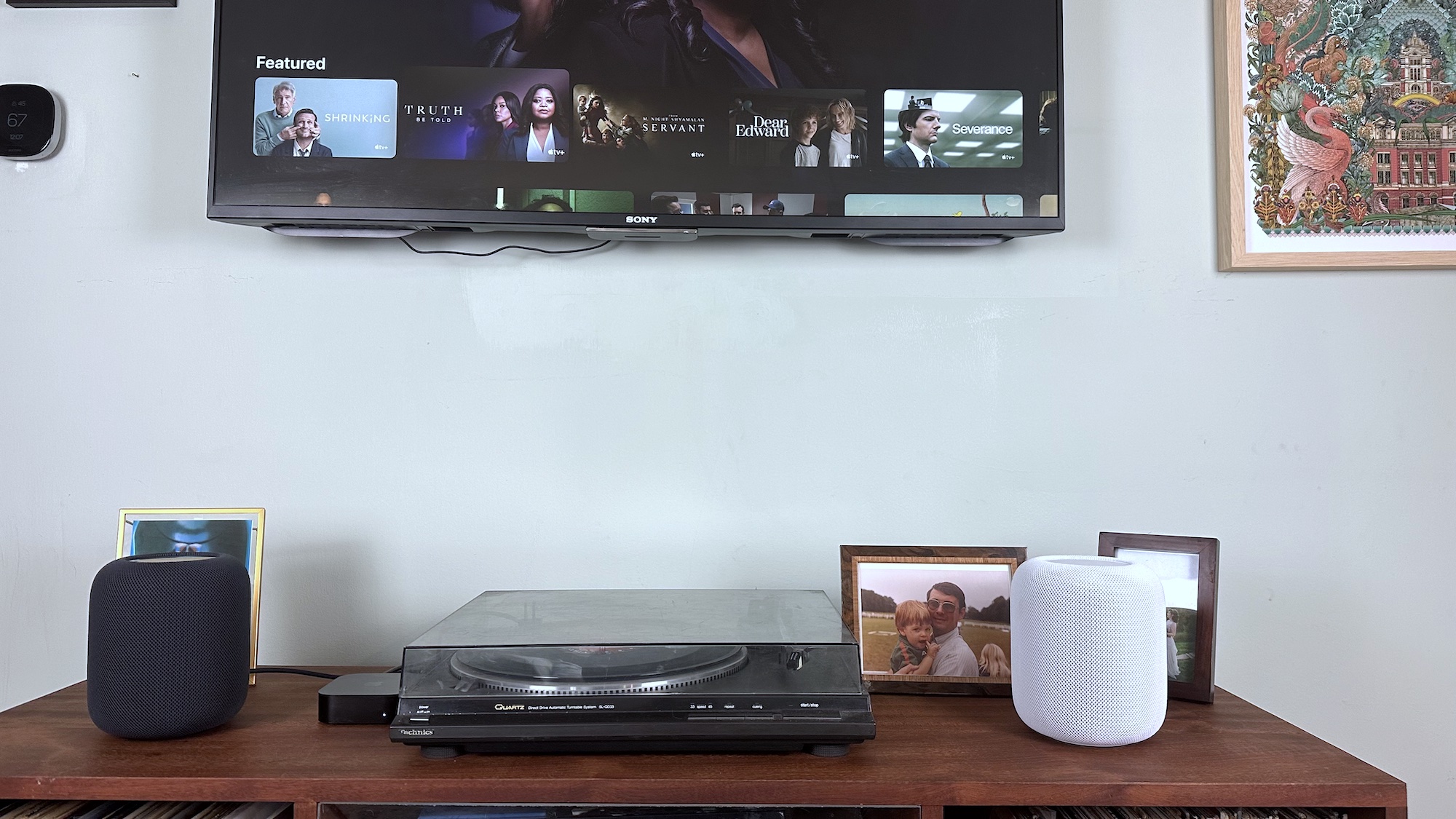
Another example of Apple’s interoperability is how the HomePod 2 and the Apple TV 4K work together. It’s not a new feature — you can pair Apple’s streaming device with any generation HomePod, but it’s nice to be able to use the HomePod for more than just music.
Setup was seamless — when I set up the Apple TV 4K, it asked if I wanted to use the HomePods as an audio output. The HomePod 2 also supports Dolby Atmos, so while you’re not getting a full-fledged surround-sound system, it’s better than nothing.
To test the HomePod 2’s movie prowess, I spun up Top Gun: Maverick, and was impressed with the hugely immersive soundscape and the roar of the F/A-18 fighters. As with music, though, vocals — especially during music tracks — were a bit muted. Kenny Loggins sounded like he was still driving to the on-ramp of the Highway to the Danger Zone.
For those who have a habit of misplacing their remotes, the HomePod offers yet another benefit: You can use Siri to control your Apple TV, so you don’t need to press the button on the side of the Apple TV remote. Amazon offers something similar through the Fire TV Cube.
Apple HomePod (2nd gen) review: Bottom line

There isn’t anything revolutionary about the HomePod (2nd generation), but as with most of Apple’s products, it’s a well thought out device. In terms of audio quality, it’s rivaled only by the Sonos One; I somewhat prefer the Sonos’ output, though I like the fact that you can use the HomePod 2 as your speaker for your Apple TV 4K (you’d need to pick up the $449 Sonos Beam if you wanted a similar feature in a Sonos product).
Apple has also added some features to better position the HomePod 2 as the center of your smart home, with support for Matter and the built-in temperature and humidity sensors. However, you are committing to HomeKit, which is still limited by the number of smart home devices it can work with. The Sonos One, by comparison, can be used as either an Alexa or a Google Home smart speaker.
Then there’s the matter of price. The HomePod (2nd generation) costs $299, which is a good deal more than its competition; if you wanted to create a stereo pair, you’re looking at $600. The HomePod 2 is a great smart speaker, but you’ll want to think about how deep into Apple’s ecosystem you want to go.

Michael A. Prospero is the U.S. Editor-in-Chief for Tom’s Guide. He oversees all evergreen content and oversees the Homes, Smart Home, and Fitness/Wearables categories for the site. In his spare time, he also tests out the latest drones, electric scooters, and smart home gadgets, such as video doorbells. Before his tenure at Tom's Guide, he was the Reviews Editor for Laptop Magazine, a reporter at Fast Company, the Times of Trenton, and, many eons back, an intern at George magazine. He received his undergraduate degree from Boston College, where he worked on the campus newspaper The Heights, and then attended the Columbia University school of Journalism. When he’s not testing out the latest running watch, electric scooter, or skiing or training for a marathon, he’s probably using the latest sous vide machine, smoker, or pizza oven, to the delight — or chagrin — of his family.
